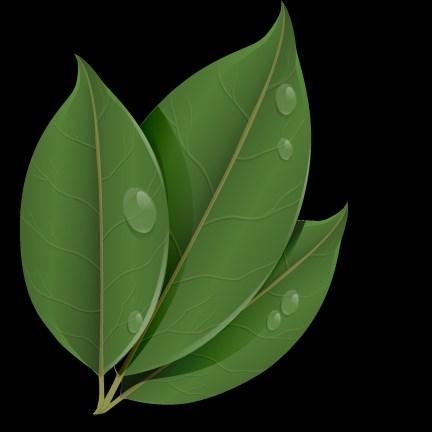
8 minute read
Thailand

By Josephine Elaine Paredes

In my first semester of freshman year, I felt stuck in a big college bubble circling the same routes around campus day to day. This monotonous routine started bringing me down and made me grow restless for adventure outside this invisible college cage. One day a representative from an organization called ISV (International Student Volunteers) came to my class advertising their program on how we could participate in a community development, wildlife conservation, or environmental management project in Costa Rica, the Dominican Republic, Thailand, South Africa, or Australia. I was easily sold when the representative told us about her own life changing after an experience volunteering in Thailand working with elephants. I knew that this was the kind of adventure I was looking for. I had an ostensive reason to travel; I wanted to make an impact on my destination as it reciprocally molded me. That day, I instantly went home to sign up for a two-week wildlife conservation project followed by a two-week adventure tour in Thailand for the month of August. When time came to disembark on my journey alone, I kept a diary to remember and reflect on my experience. I landed in Chiangmai, the second biggest city in Thailand, and met with my tour leader for my specific project along with the rest of my volunteer team who came from all over the United States, as well as the United Kingdom, Scotland, and China. We drove two hours into the village of Chiang Dao where the Wildlife 1 Foundation is located. Outside of the road a song-taew, a small truck with two benches on each side usually used as a taxi for a group of people, took us on a 10-minute drive deep into the jungle where there was a small community of farmers growing rice and native vegetation. We seemed to be in the middle of nowhere once we finally reached Wildlife 1 Foundation’s quarters. Wildlife 1 had its own sanctuary; Isolated and far away from civilization, we were living in the middle of the jungle! They used this protected area as a rehabilitation center for rescued wildlife that had been previously abused or had been confiscated from illegal trade. In this sanctuary, the animals could recover safely before being released and reintroduced into the wild. Some, unfortunately, would not be so lucky as to reenter into their natural habitat, and thus would have to stay in Wildlife 1’s care for the rest of their lives. This was the case for two Asiatic black moon bear cubs, Samson and Lilah. Their mother was killed in the bear trade in Burma for her paws and gall bladder bile. Black moon bear bile is used in traditional Chinese medicine, but has no significant effect in healing compared to the effect of modern medicine. Samson and Lilah are 5-month-old orphans found barely alive from starvation, but under Wildlife 1’s care they made a full recovery and are vivacious cubs. However, Samson and Lilah can never be released into the wild because as a result of being under the care of humans since such a young age, their instinct for danger has been dulled leaving them dependent on humans for their meals and vulnerable to attacks from poachers.


A family donated a gibbon to Wildlife 1 when they could no longer financially support it. Gibbons are protected animals in Thailand, so keeping them as pets along with killing and eating them is illegal. The gibbon breastfed on the family’s maid when it was a baby, but was cut off in its developing stages when the maid was fired. I remember that gibbon had a very nervous personality and had to be kept in a cage away from the other monkeys. ISV volunteers help build enclosures and playgrounds for the wildlife that cannot be reintroduced into the wild. The goal is to provide them with a quality life by building them structures to climb and swing from that help stimulate their brains. Part of our daily tasks was to plant rice crops, banana trees, dragon fruit, and papaya trees so that the members of Wildlife 1 can live sustainably and frugally off their plantation and feed their animals. Adam Oswell, the head operator of the Wildlife 1, depends on the help of volunteers to run the foundation while he is busy working on tracking and reporting illegal wildlife trade. He believes that through educating the surrounding local communities of illegal wildlife trade, future generations will work to conserve and respect their environment. He set us up to teach at one of the local hill tribe elementary schools, so we could teach them about which animals are protected under the Thai government and as a result, illegal to keep as pets, kill, or eat. My ISV team and I were lucky enough to learn of the reality of illegal wildlife trade happening around the Chiang Dao sanctuary. Part of our team hiked up the mountainous terrain in the jungle and set up camera traps in hope of capturing pictures of the kind of wildlife out there. When we retrieved our hidden cameras, we found that one of them was smashed and one was purposely covered over by a huge leaf. When we got back to our site, we connected the other cameras to a laptop to find a few glimpses of red pandas and foxes. Even more interesting were the pictures of a masked poacher carrying a rifle and heavy sack. There were multiple pictures of masked faces at strange hours of the night taken around 3AM. Mr. Oswell said it could be a poacher or someone from the Cambodian illegal drug trade happening in these mountains. These pictures were proof that illegal activity occurred in relatively close proximity to the sanctuary The night before my mission at Wildlife 1 would come to an end, I lay on my sleeping mat reevaluating the life waiting back for me on the other side of the world. I missed the privileges of sleeping on a full sized bed, having clean clothes to wear, and tuning out the world by consuming myself in social media and music, but I realized none of those privileges had made me feel as content with life in the way volunteering at Wildlife 1 had. I thought of the people who work here and made Wildlife 1 their permanent home. They sacrificed the luxuries of modern living to pursue their passions, sacrificing comfort for a great cause.. They had completely obliterated their self-importance with nature to realize the bigger issues at hand. After volunteering with ISV, I look forward to becoming more involved in my community and traveling the world to lend a helping hand.
Sources:
http://www.wildlife1.org/ http://www.isvolunteers.org/

St. Croix: Looking Towards a Sustainable Future By Charles Nelson
About one thousand miles off the coast of Florida, omy and ease the energy problem. Hovensa, however, is one can find the tiny eighty-eight square mile island of St. currently facing strict unpaid fines by the EPA that would Croix in the U.S. Virgin Islands. Through a school trip need to be picked up by the next buyer, an issue that is based on leadership and sustainability, I had the pleasure worse than one might expect. Hovensa has undergone onof staying a week in ly minor cleanups, and the underlying issues of water and this tiny island para- land pollution have become so bad that people do not want dise. During our one to know about them. -week stay, the class Alternative efforts are also being made to combat learned about the the energy crisis in more sustainable ways. Many buildisland from the first ings have added solar panels to their roofs and wind turhand views of gov- bines are being built on churches and on the University of ernment officials and Virgin Islands campus. Furthermore, the government revarious island na- cently joined on a project with Tibbar Energy to produce tives. As a U.S. terri- natural biomass energy from elephant grass. It is clear that tory, much of the there are many ways St. Croix can go from here on out to Hovensa the St. Croix oil refin- island’s infrastruc- produce sustainable energy, but the time to do so is now. ery that shut down in 2011. ture appears similar Given that St. Croix is an island, the options for to our own and pro- energy production are very limited. It is a completely difvides most of the same amenities as the mainland. Despite ferent story then that of the mainland US, as we have no some assistance from the states, St. Croix is suffering shortage of natural resources or energy sources. This, from a serious energy crisis. however, provides great opportunity for the island, as it is As an island with limited natural resources at a chance to invest in new bold technologies that are both hand, energy has always been an expensive issue in St. renewable and efficient. If done correctly, there is potenCroix. More recently in 2011, after the closure of one of tial for the mainland to learn from what St. Croix does and the top ten largest oil refineries in the world, Hovensa, perhaps one day to invest in some of the technology. located on St. Croix, the energy issue has become a crisis. Moreover, if St. Croix does eventually overcome their enPrices per kilowatt-hour have risen to $.55, which is about ergy crisis then they will be able to focus more on projects 5 times more than on the United States mainland. The ef- to solve their other issues such as their roads, crime, and fects of this price rise can be seen all over the island, economic stability. Sustainability is the key for St. Croix whether it is through the $7 price tag for a gallon of milk, and if achieved correctly, the island could have a very due to refrigeration costs, or through hotel managers ask- bright future. ing guests to turn off lights. After interviewing several senators of the US Virgin Islands senate, there seemed to be a consensus that energy was the biggest issue on the island, but no one seemed to have an answer to it. Some wanted the reopening of Hovensa, which they argued would boost the econ-
Sources:
http://www.eia.gov/state/analysis.cfm?sid=VQ http://www.eia.gov/electricity/state/newjersey/index.cfm The class in the elephant grass farm of tibbar energy









